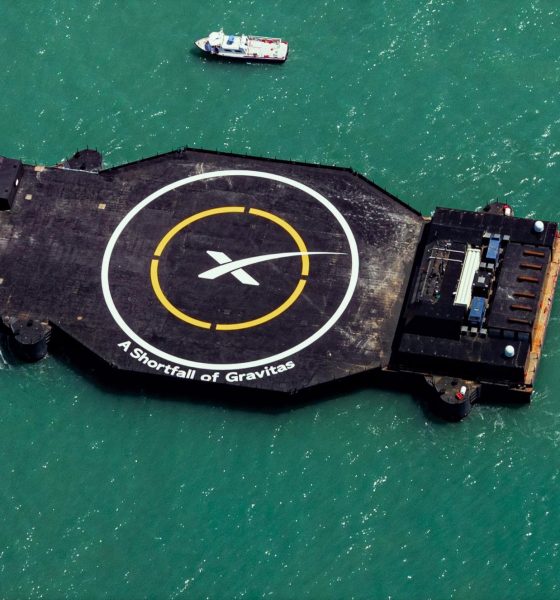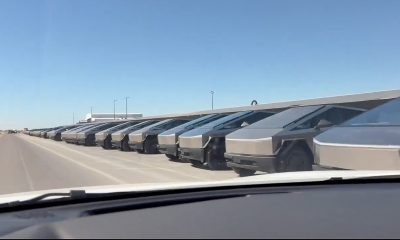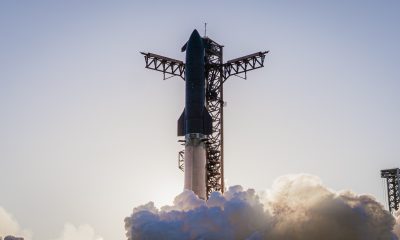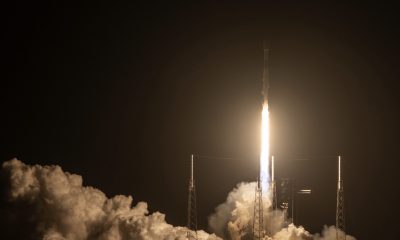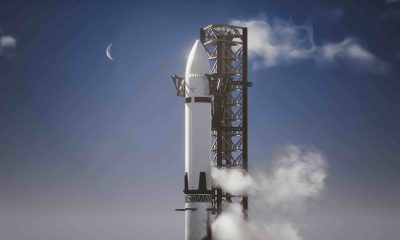SpaceX’s newest drone ship is on its way out into the Atlantic Ocean for a Starlink mission that will break the company’s record for annual launch cadence.
Somewhat confusing known as Starlink Shell 4 Launch 3 or Starlink 4-3, the batch of 53 laser-linked V1.5 satellites is scheduled to fly before Starlink 4-2 for unknown reasons and at the same time as Starlink 2-3 is scheduled to fly before Starlink 2-2 on the West Coast. Regardless of the seemingly unstable launch order, perhaps related to the recent introduction of Starlink’s new V1.5 satellite design, drone ship A Shortfall of Gravitas’ (ASOG) November 27th Port Canaveral confirms that SpaceX is more or less on track to launch Starlink 4-3 no earlier than (NET) 6:20 pm EST (23:20 UTC) on Wednesday, December 1st.
In a bit of a return to stride after launching 20 times in the first six months but only three times in the entire third quarter of 2021, Starlink 4-3 is currently the first of four or even five SpaceX launches scheduled in the last month of the year. Nevertheless, if Starlink 4-3 is successful, it will also set SpaceX up to cross a milestone unprecedented in the history of satellite launches.
Specifically, Starlink 4-3 is SpaceX’s 16th dedicated Starlink launch of 2021 and will mark 951 Starlink satellites safely delivered to orbit since January 20th. If, as CEO Elon Musk has telegraphed is the plan, SpaceX intends to complete one more dedicated Starlink launch in December (either Starlink 2-2 or 2-3), the company could round out 2021 having launched more than a thousand satellites in a single year.
Thanks to Starlink, 2020 was the first year in history in which more than a thousand satellites (technically 1283) were launched into orbit. Now, in 2021, there’s a good chance that SpaceX Starlink launches alone will account for more than a thousand satellites launched in one year. Altogether, SpaceX will likely end the year having singlehandedly launched a total of more than 1240 satellites in 2021 – and despite only completing 3-4 Starlink launches in the last seven months of the year compared to 13 in the first five months.
For SpaceX and Starlink, that’s great news. In March and November 2018, the FCC approved two SpaceX applications to launch and operate constellations of ~4400 and ~7500 Starlink satellites – a total of around 11,900 satellites. To avoid having its licenses revoked, SpaceX – like all other FCC constellation applicants – is required to launch half of its licensed constellation within six years of its license receipts and full constellation within nine years. For SpaceX, that means it has to launch at least ~2200 satellites operating around 550 km (340 mi) and ~3750 satellites operating around 350 km (~220 mi) by March and November 2024, respectively.
With a bit less than 1700 Starlink satellites currently functioning in orbit, even if SpaceX merely repeats its 2021 cadence, it will be on track to outright finish Starlink’s first 4400-satellite phase by mid-2024 and should easily cross the halfway mark by mid-2022 – years ahead of schedule for both. However, simultaneously hitting Starlink’s very low Earth orbit (VLEO) deployment milestones will still be a massive challenge. Given that SpaceX has yet to launch a single VLEO Starlink spacecraft three years after license approval, it now has less than three years to launch ~3750 VLEO satellites on top of at least 500 more LEO satellites.
If SpaceX can replicate its H1 2021 Starlink launch cadence throughout 2022, completing at least 26 launches in 52 weeks, it may actually have a shot at pulling off a cadence close to what is needed to meet its FCC deployment requirements (an average of 1400 satellites per year for the next three years). If SpaceX simply aims for the average annual numbers needed to complete the full ~11,900-satellite Starlink constellation by November 2027, it will need to launch around 1800-2000 satellites per year – equivalent to 35-40 Falcon 9 rockets.

News
Tesla Australia celebrates 150k vehicles on domestic roads
The milestone was announced by the electric vehicle maker on social media platform X.
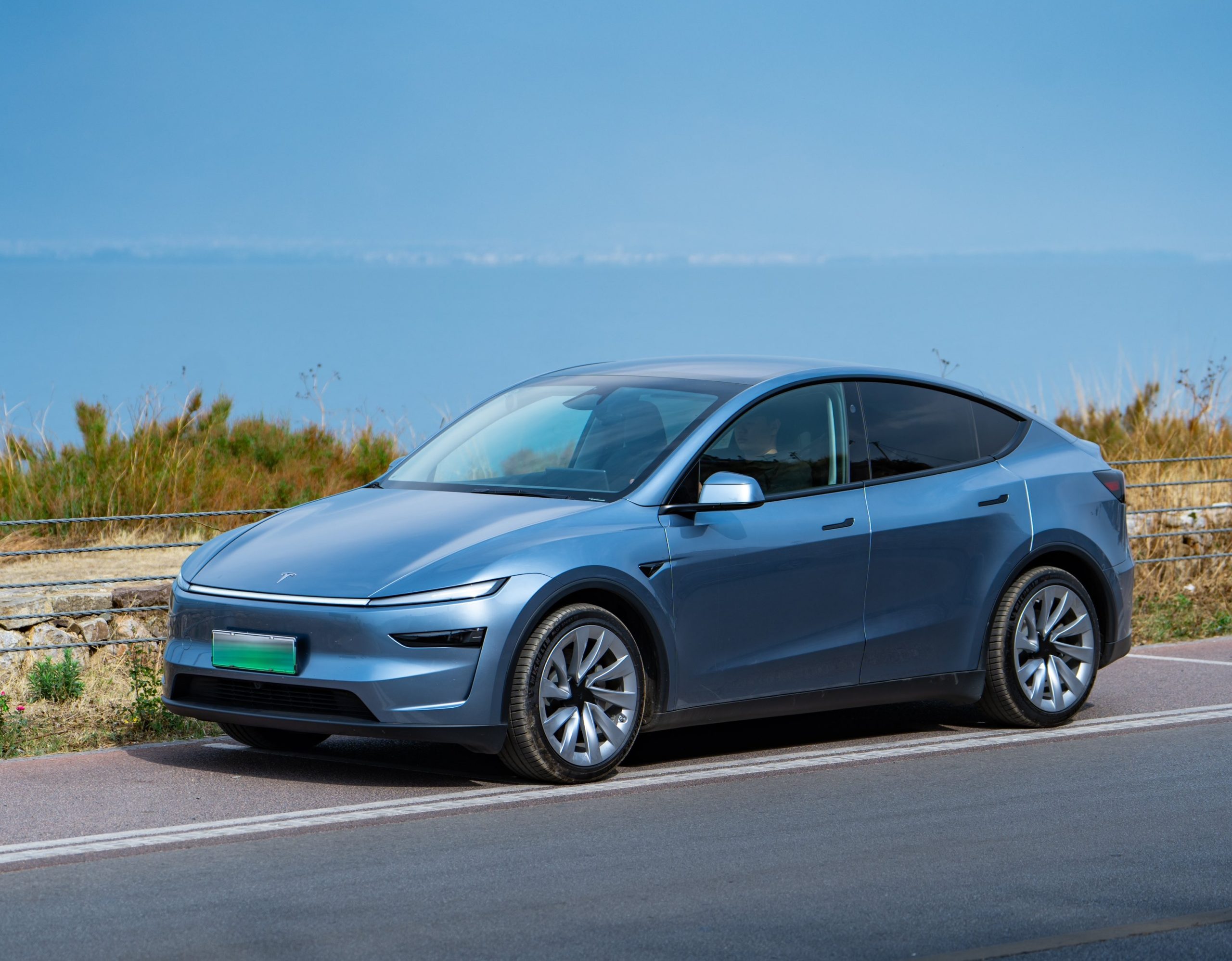
Tesla has reached a major milestone in Australia, celebrating 150,000 vehicles on local roads.
The milestone was announced by the electric vehicle maker on social media platform X.
Sustainability for all
In its post on X, Tesla Australia and New Zealand noted that the 150,000-vehicle milestone is a notable accomplishment as it accelerates “sustainable abundance for all.” The company also thanked its customers down under for supporting its vehicles over the years.
“Accelerating sustainable abundance for all. Celebrating 150k Teslas on the road. Thank you, Australia,” Tesla Australia and New Zealand wrote in its post on X.
The post was accompanied by a photo of what appeared to be a Quicksilver Model Y premium with the Sydney Opera House in the background. This is an appropriate photo for the EV maker, as the Model Y consistently ranks among Australia’s top-selling electric cars, even as the market becomes flooded with cheaper, newer, and flashier competitors.
Australia’s FSD momentum
Last month, Tesla revealed that FSD Supervised users in Australia and New Zealand have collectively driven over 1 million kilometers within two weeks of the system’s public release. The company noted that drivers are averaging around 80,000 kilometers per day with FSD Supervised active, equivalent to 67 laps around Australia or 625 trips from Auckland to Invercargill.
“In less than 2 weeks, owners have travelled 1 million kilometers on FSD Supervised in AU & NZ,” Tesla’s local account wrote.
Australia became the first right-hand-drive market to gain access to FSD Supervised, which was officially launched in the country on September 18. Coupled with the presence of FSD (Supervised) subscriptions, the adoption of FSD in Australia has been understandably quick.
Elon Musk
Elon Musk hints at when Tesla can fix this FSD complaint with v14
Tesla has worked on resolving the issue and has worked on it with subsequent rollouts, but it has only improved slightly. The company has mentioned that it is working to fix it completely, but it seems the next big Software Update to actually resolve the issue altogether will likely be 14.2.

Tesla CEO Elon Musk hinted at when the company will resolve a major complaint with the Full Self-Driving suite. This particular issue has been persistent and a common complaint within the v14 suite.
Tesla has had its v14 FSD rollout deployed for over a month, and its earliest iterations featured a vast majority of improvements from the past versions. However, one common complaint has continued to be mentioned: stuttering and hesitancy.
Tesla Full Self-Driving’s biggest improvements from v13 to v14
Most commonly, FSD users have experienced this at intersections when the Tesla is at a complete stop. The vehicle will inch forward, contemplate proceeding, and then stutter pretty significantly before ultimately moving forward.
Tesla has worked on resolving the issue and has worked on it with subsequent rollouts, but it has only improved slightly. The company has mentioned that it is working to fix it completely, but it seems the next big Software Update to actually resolve the issue altogether will likely be 14.2.
Musk confirmed that on Wednesday:
Yes
— Elon Musk (@elonmusk) November 12, 2025
When will v14.2 rollout? It’s likely a month or more away. Currently, Tesla is rolling out v14.1.7, which is the latest version and features some minor improvements to Hardware 4 vehicles.
These cars are currently on v14.1.4, but are not receiving v14.1.5 or v14.1.6, as both of those seemed to be internal releases to company employees.
Tesla FSD v14.1.7 incoming…. pic.twitter.com/6zuMDZRVD2
— TESLARATI (@Teslarati) November 12, 2025
The stuttering issue has been a main complaint of many FSD users, and it is something that is being addressed. Musk’s confirmation that the suite is likely to receive a fix for this issue with the next major FSD release is a sign of good things to come, but we’re hopeful it comes sooner rather than later.
Overall, v14 has been an excellent improvement from v13 with the addition of the additional Speed Profiles of Mad Max and Sloth, as well as new Arrival Options that give the driver an opportunity to let the car park in a suitable location upon arriving at the destination.
@teslarati 🚨🚨 Tesla Full Self-Driving and Yap is the best driving experience #tesla #fsd #yapping ♬ I Run – HAVEN.
News
Tesla teases new market entrance with confusing and cryptic message

Tesla teased its entrance into a new market with a confusing and what appeared to be cryptic message on the social media platform X.
The company has been teasing its entrance into several markets, including Africa, which would be a first, and South America, where it only operates in Chile.
In September, Tesla started creating active job postings for the Colombian market, hinting it would expand its presence in South America and launch in a new country for the first time in two years.
The jobs were related to various roles, including Associate Sales Manager, Advisors in Sales and Delivery, and Service Technicians. These are all roles that would indicate Tesla is planning to launch a wide-scale effort to sell, manage, and repair vehicles in the market.
Last night, Tesla posted its latest hint, a cryptic video that seems to show the outline of Colombia, teasing its closer than ever to market entry:
— Tesla North America (@tesla_na) November 12, 2025
This would be the next expansion into a continent where it does not have much of a presence for Tesla. Currently, there are only two Supercharger locations on the entire continent, and they’re both in Chile.
Tesla will obviously need to expand upon this crucial part of the ownership experience to enable a more confident consumer base in South America as a whole. However, it is not impossible, as many other EV charging infrastructures are available, and home charging is always a suitable option for those who have access to it.
Surprisingly, Tesla seems to be more concerned about these middle-market countries as opposed to the larger markets in South America, but that could be by design.
If Tesla were to launch in Brazil initially, it may not be able to handle the uptick in demand, and infrastructure expansion could be more difficult. Brazil may be on its list in the upcoming years, but not as of right now.
@teslarati 🚨🚨 Tesla Full Self-Driving and Yap is the best driving experience #tesla #fsd #yapping ♬ I Run – HAVEN.
-

 News6 days ago
News6 days agoTesla shares rare peek at Semi factory’s interior
-

 Elon Musk6 days ago
Elon Musk6 days agoTesla says texting and driving capability is coming ‘in a month or two’
-

 News5 days ago
News5 days agoTesla makes online ordering even easier
-

 News5 days ago
News5 days agoTesla Model Y Performance set for new market entrance in Q1
-

 News6 days ago
News6 days agoTesla Cybercab production starts Q2 2026, Elon Musk confirms
-

 News6 days ago
News6 days agoTesla China expecting full FSD approval in Q1 2026: Elon Musk
-

 News7 days ago
News7 days agoTesla Model Y Performance is rapidly moving toward customer deliveries
-
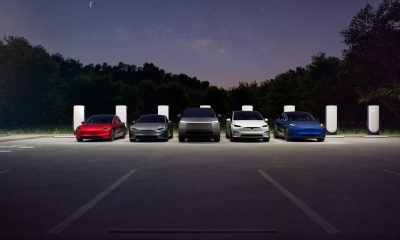
 News4 days ago
News4 days agoTesla is launching a crazy new Rental program with cheap daily rates

